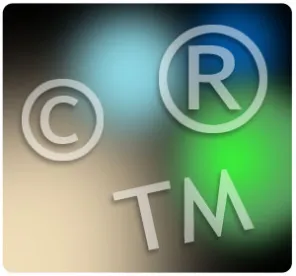Takeaway: Section 315(b) does not bar a petition for review of a reissue patent when the petition is filed within one year after the petitioner is served with a complaint alleging infringement of the reissue patent but more than one year after the petitioner is served with a complaint alleging infringement of the surrendered original patent if the claims of the reissue patent are not “substantially identical” to the claims of the original patent.
In its Final Written Decision, the Board concluded that Petitioner had not shown by a preponderance of the evidence that claims 101-104 of U.S. Patent RE43,707 are unpatentable. The ’707 patent relates to “a system and method for noise reduction in medical images being viewed on display systems.”
The Board began with claim construction. Claims of an unexpired patent are interpreted “using the broadest reasonable interpretation in light of the specification of the patent in which they appear.” Although neither party set forth a construction for the term “tolerance level,” this is the only term the Board explicitly construed in its Decision. The Board first noted that “[t]he ʼ707 patent does not provide a specific definition for ‘tolerance level,’ but discloses that in measuring a color shift ‘small deviations in color go unnoticed.’” It then reviewed dictionary definitions for “tolerance” and “level” in The American Heritage Dictionary before reaching a conclusion that “tolerance level” means “the permissible amount of deviation in luminosity that still provides an apparently uniform display.”
The Board then addressed Patent Owner’s contention “that the Petition is time-barred under 35 U.S.C. § 315(b) because the Petition was filed more than one year after the date on which Petitioner was served a complaint alleging infringement of the Patent.” In particular, Patent Owner argued that the Petition is untimely because Patent Owner served Petitioner with a complaint alleging infringement of U.S. Patent No. 7,639,849 more than two years before the Petition was filed. The Board, however, was not persuaded by Patent Owner’s arguments.
An original patent is surrendered “upon the issue of the reissue patent.” 35 U.S.C. §§ 251, 252. The ’707 reissue patent “is a distinct property right that ‘does not simply replace an original patent [the ’849 patent] nunc pro tunc.’” Under 35 U.S.C. § 315(b),
[a]n inter partes review may not be instituted if the petition requesting the proceeding is filed more than 1 year after the date on which the petitioner, real party of interest, or privy of the petitioner is served with a complaint alleging infringement of the patent (emphasis added by the Board).
Patent Owner originally served Petitioner a complaint alleging infringement of the ’849 patent, not the ’707 patent. “The reissuance of the ʼ849 patent as the ʼ707 patent did not continue the ʼ849 patent, but rather resulted in the surrender of the ʼ849 patent and the issuance of a new patent, the ʼ707 patent.” Patent Owner served an amended complaint alleging infringement of the ’707 patent served on January 17, 2013. The Petition was accorded a filing date of January 17, 2014, which is not more than one year after Petitioner was served with the amended complaint first alleging infringement of the ’707 patent. The Board therefore concluded that Section 315(b) was not applicable. In addition, the Board was “not persuaded by Patent Owner’s argument that the claims of the ʼ849 patent are substantially identical to the claims of the ʼ707 patent” and concluded that “under Section 252, the ʼ849 patent is not the same as the ʼ707 patent for the purposes of Section 315(b),” which “requires that “the petitioner . . . is served with a complaint alleging infringement of the patent.” (emphasis added by the Board).
Next, the Board considered whether Claims 101-104 are obvious over Green and Kamada. Petitioner argued that “Greene teaches all of the limitations of independent claim 101, except for the limitation ‘wherein the tolerance level varies among pixels of the display,’” that Kamada teaches “that a constant correction value is applied to a rectangular region, and the correction value gradually decreases in the surrounding region until it becomes zero,” and that “a person with ordinary skill in the art would have had reason to combine the teachings of Greene and Kamada in order to reduce the size of correction data that needs to be stored, an advantage taught by Kamada.” Patent Owner argued that “Kamada teaches correcting an uneven appearance, but fails to teach a ‘different ‘tolerance level’ of one pixel versus another.’” The Board was persuaded by Patent Owner’s argument. It concluded that “Kamada’s constant correction value is applied regardless of any ‘tolerance value,’” and refused to “infer that an increase or decrease in the correction value would be based on a ‘tolerance value.’” In reaching its conclusion, the Board also determined that Petitioner’s argument that paragraph 69 of Kamada teaches this limitation was raised “for the first time at the hearing” and that it “did not present this Rationale in the Petition.” Accordingly, the Board stated that it would “not consider it for the purposes of [the] Decision.”
The Board thus concluded that Petitioner did not “demonstrate[] by a preponderance of the evidence that claims 101-104 would have been obvious over Greene and Kamada.”
Eizo Corporation v. Barco N.V., IPR2014-00358
Paper 21: Final Written Decision
Dated: July 14, 2015
Patent: RE43,707 E
Before: Kalyan K. Deshpande, James B. Arpin, and David C. McKone
Written by: Deshpande
Related Proceedings: Barco, N.V. v. Eizo Nanao Corp., 11-cv-00258 (N.D. Ga.); Inter Partes Reexamination No. 95/002,047; Ex Parte Reexamination No. 90/020,037



 />i
/>i

